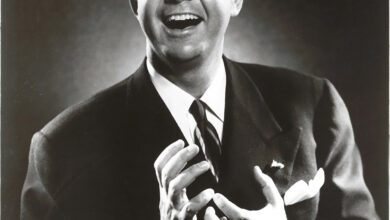Story By Andrea Martin | Photography By Ralph Demilio
Every medium of communication has been used by Christianity to spread the gospel. From elegant stained glass windows that were constructed in the 13th century to help teach the illiterate the story of the bible to pamphlets and radio stations that come up with catchy slogans to resonant in the minds of their audience to jewelry that sparkles and attracts. So, was it not only a matter of time before we use skin to keep the image of Christianity ever present?
On a Saturday afternoon, the Fat Kats Artistry in the Downtown Square was brimming with life. A group of twelve church members from the Wildwood United Methodist Church arrived with excited smiles and an idea on how revitalize the spread of the good news – the group would all receive matching religious tattoos. Tattoo artist Dan Loose recalls the day as chaotic, with so many people he was working on tattooing one right after the other. “It was fun, though,’ Loose laughs. “It made the day go by real quick.”
Loose had never tattooed such a large group with religious purposes, but he wasn’t too surprised by the idea. With regards to the message the group was trying to send, Loose believes everyone is entitled to their own beliefs and the desire to share. His job is only to make sure the tattoo embodies all that the customer wants it to. Right before the tattooing started, the group held hands in prayer. Following the tattoos, the group of almost 30 participated in a bible study.
The group all received a matching cross and flame tattoo on noticeable and visible parts of the body to encourage people to ask about it. “For us, it’s a way we can share our faith,” says Reverend Michael Beck, who tattooed his cross on his hand. Others tattooed their forearms and some their feet. Beck takes advantage of the questions about his tattoos to spread the word of God and explain to the people of all the good that God has done for him.
Christianity has recently been in decline and Beck believes that some of this generation has deemed it irrelevant. Because of this, Bishop Carter from The Florida Conference of the United Methodist Church has encouraged his clergy to pursue fresh expression of the faith and worship. These tattoos are a new approach to evangelism, a new way to be holy and a new way to connect members of the church with the younger demographic and to connect the younger demographic with God. Each of the members of the group with tattoos all have pasts that they have been redeemed from. These tattoos commemorate all that God has done in the lives of these men and women, bonding and bringing them all closer together.
“I don’t think getting a tattoo is a sin,” expressed Beck. “Not finding new ways to lead people to God, I think, is a sin.” It seems easy to shun those different. In today’s changing culture where not only are tattoos becoming increasingly popular, but also the acceptance of the different sexual orientations and the further pursuit of equality between the sexes is quickly becoming the norm. In such tension, Bible verses tend to fall out of context.
One verse that some interpret as warning us against tattoos, Leviticus 19:28, also states to not cut one’s hair, trim one’s beard or even eat bloody meat. The bible relies heavily on interpretation, whether or not one has a strict or loose understanding of it; it is almost impossible in this modern society to follow the numerous list of rules in the Old Testament alone. “God’s mission had to start and advance where humanity was,” Beck elaborates on how when written, the bible included some realities that, to modern sensibilities, are deemed wrongs – such as slave-care laws. Beck does not believe the intent was to hold people to the rules of Leviticus in this moving culture, but that the intent was set to transform the culture for God.
While the act of being tattooed is not universally accepted, there will always be new ways of spreading faith. In the name of any God or religion, the messages will be spread in attempts to enlighten the masses, help the public find salvation or simply allow individuals to discover their own retreat. Surrounding oneself with ideas, and the people who share those ideas, supports communities and a feeling of safety. This is why people are drawn to religion and help to pass along this comfort to others. In the end, what’s really the difference between an “I Love Jesus” tattoo and an “I Love Jesus” bumper sticker?





